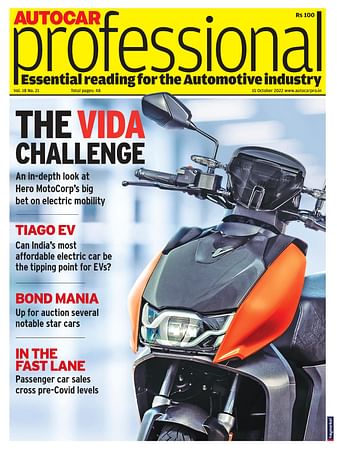Collecting precious metals for EVs from sea floor beats mining, claims study
Study claims that collecting polymetallic nodules from Pacific for making electric vehicle batteries is far less damaging to the environment than mining on land for ores
As the electric vehicle (EV) revolution continues to gathers momentum, increasing attention is being drawn to the source of the precious metals needed to produce batteries and motors.
The traditional way of sourcing these metals, which include copper, nickel, cobalt and manganese, is through mining on land - an inherently wasteful process that can be toxic to the local area and highly polluting to the wider ecosystem. However, a new study – funded by Canadian deep-sea mining firm DeepGreen Metals but conducted independently – has highlighted an alternative source: the Pacific Ocean.  A year-long Life Cycle Sustainability Assessment compared the environmental impact of land mining with collecting mineral-rich polymetallic nodules from the ocean floor to produce one billion EV batteries. It found that the latter process produced 70% less CO2 and 100% less solid waste while using 94% less land and 92% less forest.
A year-long Life Cycle Sustainability Assessment compared the environmental impact of land mining with collecting mineral-rich polymetallic nodules from the ocean floor to produce one billion EV batteries. It found that the latter process produced 70% less CO2 and 100% less solid waste while using 94% less land and 92% less forest.
The relative impact study also found that 93% less wildlife was at risk. However, while it acknowledged the number of species in the deep sea collection area was limited, much remains unknown about the variety of species that live there and the wider ecosystem. DeepGreen intends to conduct a more in-depth, multi-year study into the long-term effects on the seabed.
"Extraction of virgin metals from any source is by definition not sustainable and generates environmental damage," said DeepGreen chairman and CEO Gerard Barron. "We believe the polymetallic nodules are an important part of the solution. They contain high concentrations of nickel, cobalt and manganese; they're effectively an EV battery in a rock."
The nodules are said to be made of almost 100% usable materials and are non-toxic, whereas land-mined ores have a much lower yield rate and do contain toxic elements.
The World Bank estimates that demand for the metals used in EV batteries will increase 11-fold from the current level by 2050. Shortages in mined nickel, cobalt and copper are expected to emerge in certain areas within the next five years.
RELATED ARTICLES
Sept 2024 From R&D incentives to EV infrastructure: What auto components industry expects from Budget 2024
Sept 2024 From R&D incentives to EV infrastructure: What auto components industry expects from Budget 2024
US car majors hit the brakes on driverless cars
Ford Motor and Volkswagen to close self-driving startup Argo AI, due to lack of technology and clear regulations.
Autoliv and Geely to develop advanced safety tech for future vehicles
Scope of cooperation includes safety for high-level autonomous driving, intelligent steering wheel technology, a 360deg ...






 22 Apr 2020
22 Apr 2020
 5600 Views
5600 Views










 Autocar Pro News Desk
Autocar Pro News Desk




